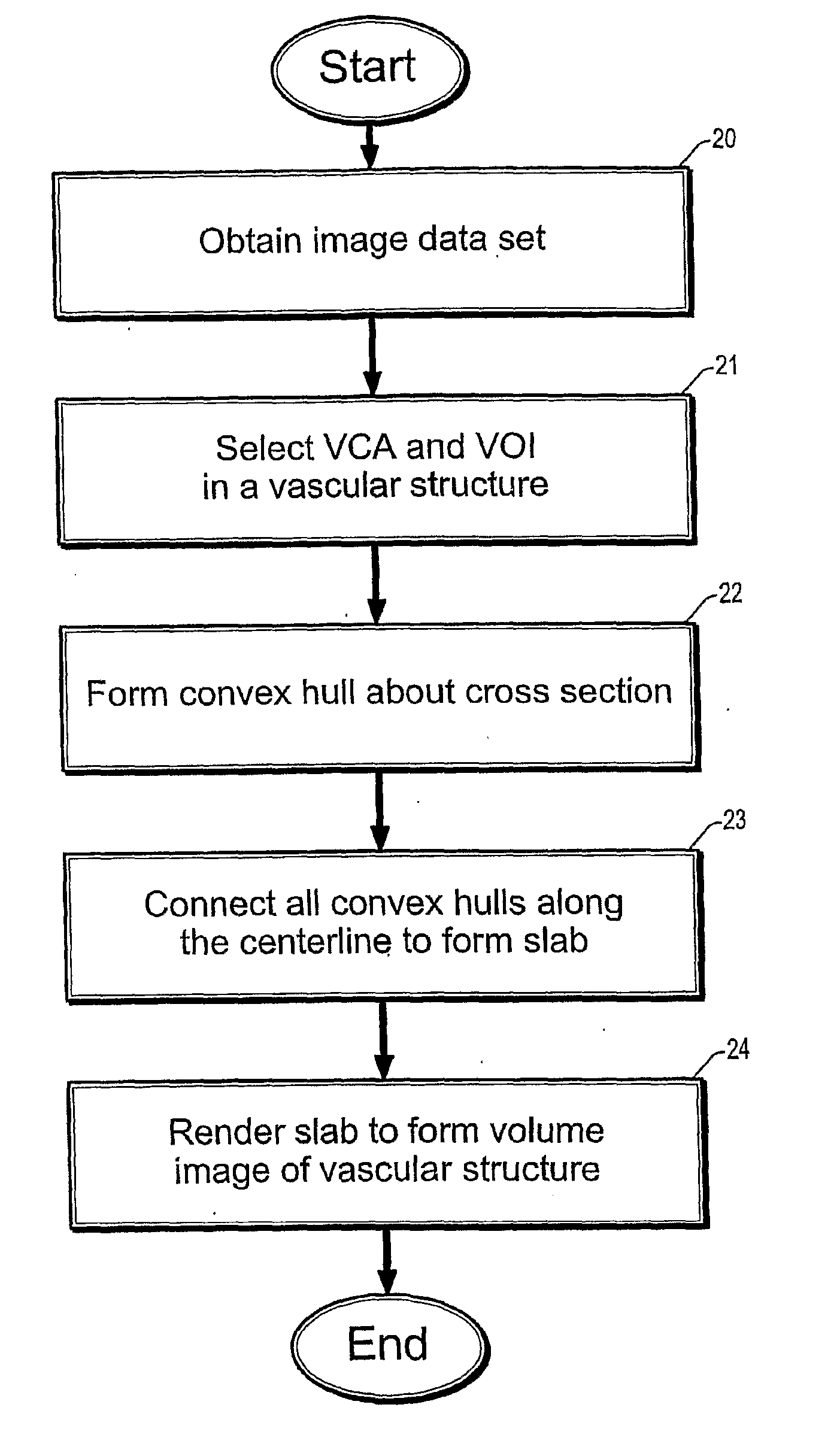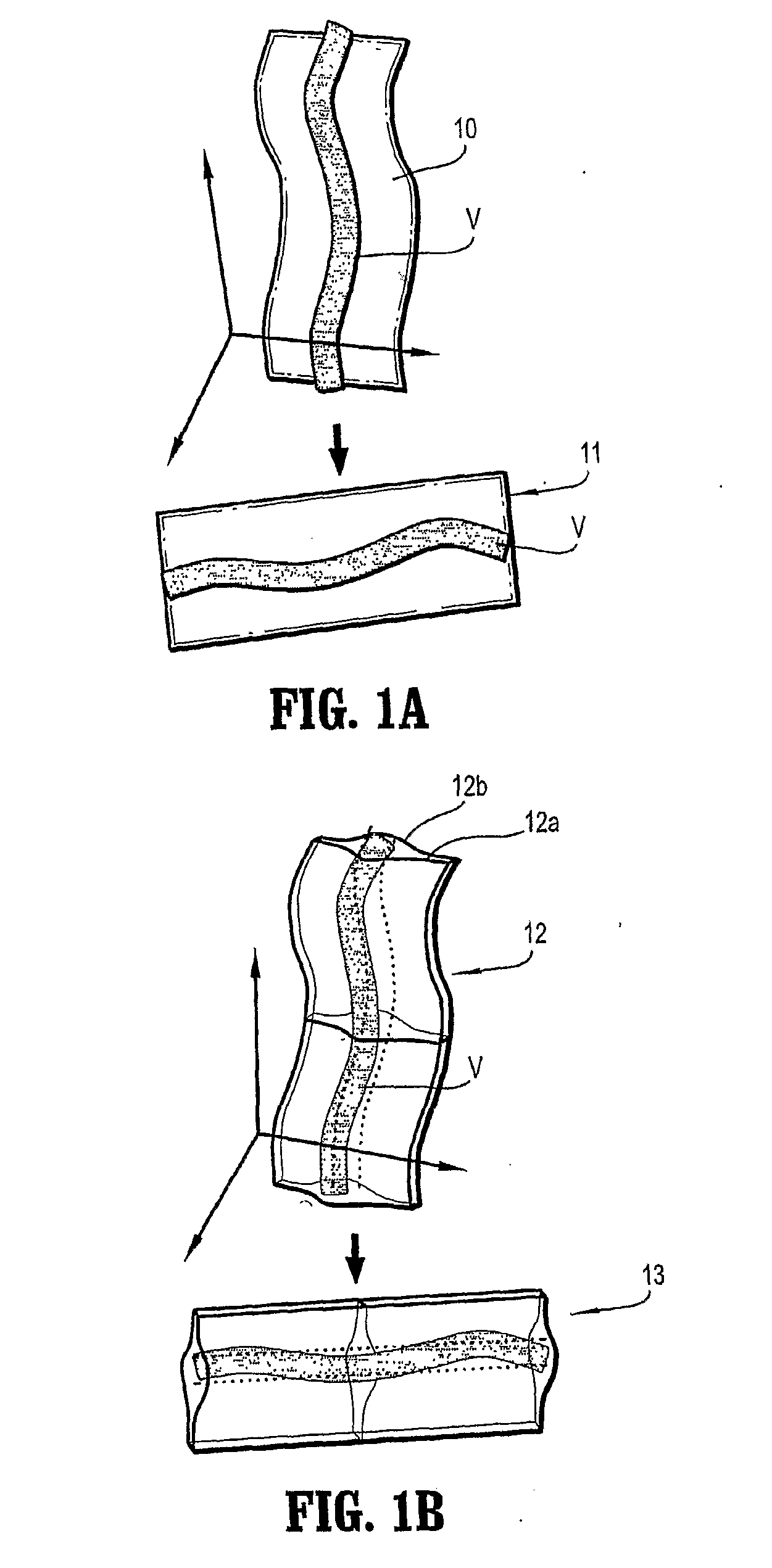System And Method For Vascular Visualization Using Planar Reformation Of Vascular Central Axis Surface With Biconvex Slab
a vascular central axis surface and planar reformation technology, applied in the field of systems and methods for vascular visualization, can solve the problems of lack of 3d information of the entire vessel, insufficient methods for visualizing vascular structures, and inability to accurately present calcification and stenosis, etc., to achieve efficient real-time processing and accurate presentation of calcification and stenosis
- Summary
- Abstract
- Description
- Claims
- Application Information
AI Technical Summary
Benefits of technology
Problems solved by technology
Method used
Image
Examples
Embodiment Construction
[0032] Exemplary embodiments of the invention include systems and methods for providing 3-D visualization of vascular structures using VPR rendering of 3D biconvex slab volumes to render precise 3D spatial information. Vascular visualization methods according to exemplary embodiments of the invention include methods for resampling image data within thick biconvex slab (as opposed to a thin 2D surface as with conventional methods) to enable fast and efficient visualization of an entire vascular volume in one image and minimize the obstructions from adjacent organs, such as bones. FIGS. 1A and 1B are exemplary diagrams that illustrate differences between conventional VPR rending and visualization methods and exemplary methods according to the invention.
[0033] In particular, FIG. 1A depicts a conventional vascular visualization process, wherein a vascular structure (V) is visualized by resampling a VCAS (vascular central axis surface) (10), which is a curved surface passing through a ...
PUM
 Login to View More
Login to View More Abstract
Description
Claims
Application Information
 Login to View More
Login to View More - R&D
- Intellectual Property
- Life Sciences
- Materials
- Tech Scout
- Unparalleled Data Quality
- Higher Quality Content
- 60% Fewer Hallucinations
Browse by: Latest US Patents, China's latest patents, Technical Efficacy Thesaurus, Application Domain, Technology Topic, Popular Technical Reports.
© 2025 PatSnap. All rights reserved.Legal|Privacy policy|Modern Slavery Act Transparency Statement|Sitemap|About US| Contact US: help@patsnap.com



